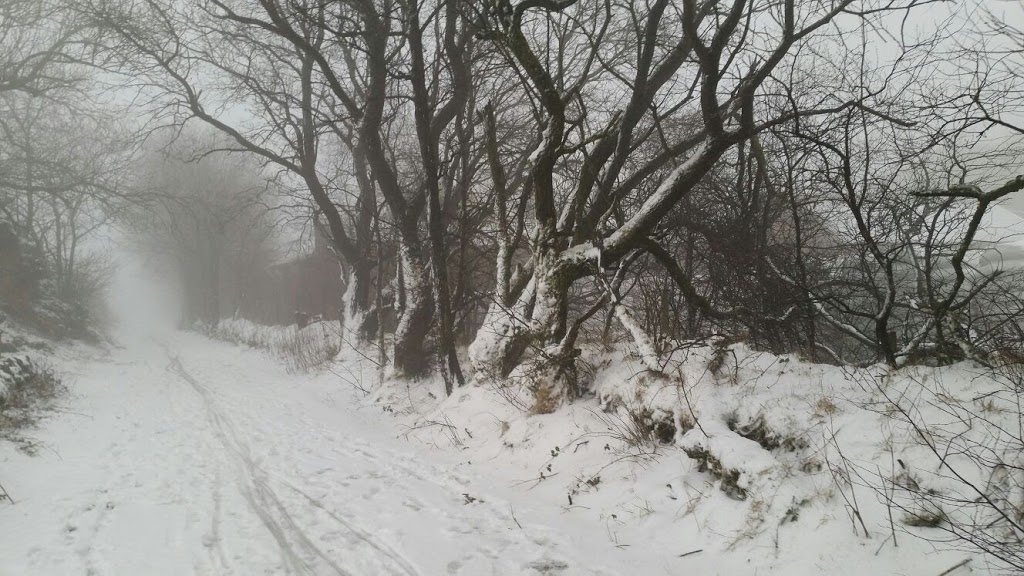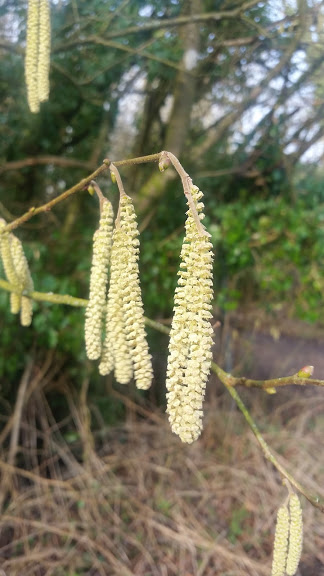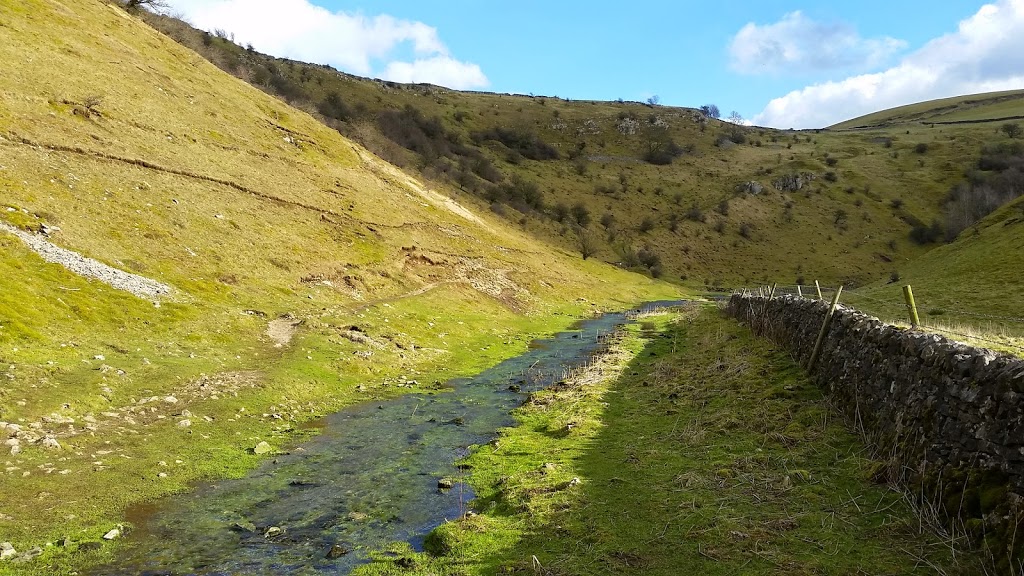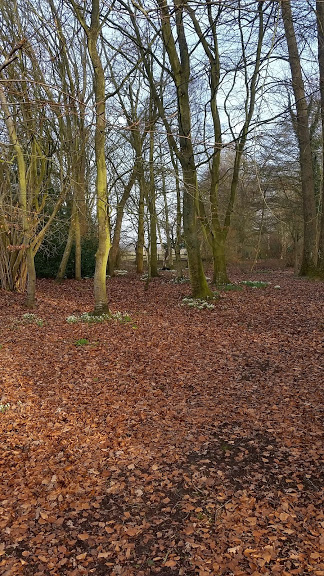What is seasonal in February? We are teased with the promise of spring but often has the barb of winter.
There is always in February some one day, at least, when one smells the yet distant, but surely coming, summer.
Gertrude Jekyll

Snowdrops in full glory, crocus towards the end of the month and Daffodils powering they way up into the light in readiness for March and St. Davids day. aconites and annenomies starting to show, celandines tentatively growing. Cow parsley, nettles, and all sorts of greenery can start sprouting, yet, all can still get buried in snow.
I have seen plants growing proud to be buried under feet of snow. When the snow melts it looks like devastation, yet within days the plants are recovered and spring approaches once more.
Dates, events, holidays and festivals.
Jump to....
February 2022
Seasonal, astronomical and nautical events
1st February – New Moon
8th February – 1st Quarter
11th February – Full Moon, Snow Moon
23rd February – 3rd quarter
Festivals and events, religious, traditional and sporting
1st February – Chinese new year – Year of the Tiger
1st February – Imbolc / Candlemass & St. Brides Day
5th February – Lord Crawshaw Memorial Walk
5th – 6th February – 6 Nations Rugby (Round 1)
12th – 13th February – 6 Nations Rugby (Round 2)
14th February – St Valentines Day
26th February – Welsh Junior of the Year Special Event (Dog Show)
26th – 27th February – 6 Nations Rugby (Round 3)
TBA February – Slaithwaite Moonraking Festival
TBA February – JORVIK Viking Festival
February 2022
Seasonal, astronomical and nautical events
1st February – New Moon
8th February – 1st Quarter
11th February – Full Moon, Snow Moon
23rd February – 3rd quarter
Festivals and events, religious, traditional and sporting
1st February – Chinese new year – Year of the Tiger
1st February – Imbolc / Candlemass & St. Brides Day
5th February – Lord Crawshaw Memorial Walk
5th – 6th February – 6 Nations Rugby (Round 1)
12th – 13th February – 6 Nations Rugby (Round 2)
14th February – St Valentines Day
26th February – Welsh Junior of the Year Special Event (Dog Show)
26th – 27th February – 6 Nations Rugby (Round 3)
TBA February – Slaithwaite Moonraking Festival
TBA February – JORVIK Viking Festival
Find more events and notable dates throughout the year
February seasonal foods
What foods are seasonal in February.
Greens and leaves: Brussels sprouts, winter cabbage, savoy cabbage, Cauliflower, Chicory, Purple sprouting broccoli, Pak choi, Radicchio, Kale.
Roots and other veg: Celery, Celeriac, Jerusalem artichoke, Leek, Onion, Spring onion, Parsnip, Sweet potato, Maincrop potato, Swede, Turnip.
Meat: Beef, Chicken, Spring Lamb, pork, venison,
Fruit: forced rhubarb, Bramley apple and pears.
Seafood: Cod, Crab, Mussels, Oyster.
Exotics: Banana, Clementine, Grapefruit, Lemon, Orange, Pomegranate.
Find out more about seasonal foods throughout the year with a guide to Seasonal foods.
In nature
Hazel flowers, lesser celandine, Blackthorn, Winter Aconites, snowdrops. Early amphibians and frogspawn.
Trees can start to change: how much depends on the weather and how north or south you might be.
Buds start to enlarge. Close up you may see tiny changes, but from a distance woods and forests can dramatically change colour. Notables are Birch that can appear as a purple haze, Willows that can be yellow or even bright orange. Anywhere that there are trees you may notice this.
February can also herald the first blossom from the middle of the month. Blankets of white flowers of the Blackthorn (Prunus spinosa) also called the Sloe.
It’s still a good time to plant trees and hedges if the ground is not flooded or frozen.
By Graeme Davis and Alan
On the farm
General farm maintenance plus hedging and tree planting.
Sheep in lower pastures. Sheep brought in for pregnancy scanning and housing
Livestock being given additional feed (hay, beets, sheep nuts/cattle cake).
Muck and slurry spreading.
Early seed drilling, Peas & Beans. Resow of failed Winter crops or crops that were not sown in Autumn.
Find out more about what is happening in the Year on the farm

Things to do in February
In the February garden
If the ground is not frozen or too wet, time to start sowing Onion seeds, Broad Beans, Peas and Summer Cabbage. If you have Cloches, you can sow early Beetroot and carrot.
Plant Garlic and shallots.
If you have a greenhouse or heated growing space (window cill) Tomatoes, cauliflower and some summer bedding plants can be considered.
Gardening hints
Do the digging that you meant to do over the winter, but never had the time or weather to do it.
Prune Apples and pear trees. Trim hedges if needed; unless overgrown, leave them for a year to two to supply nesting habitat.
Time to get outside and start enjoying the first flowers. Snowdrops are in glory at the start of the moth, with primroses, Crocus, Polyanthus, and anemones showing.
Out and about
Unless the weather is harsh the birds start fully on the business of territories. The mornings start to be filled with beautiful sounding song – in effect the bird telling others to go away, this is mine.
The National Trust run a series of events in February that coincide with Helf Term. See whats on in your local area with February half term events for all the family
Days getting longer and, but winters not done yet!

Recipe of the month.
Champ(ion) Colcannon
Colcannon might be a traditional Irish dish for all souls night ( or Halloween as we now call it). however, making a champ variant is a good use for Winter greens. I omit the spring onion, as not in season. Rely instead on the leeks.
For more seasonal recipes, see the February food and nature blog
Ingredients
1lb / 450g potatoes (or approx 200g / person)
A good handful of Kale or other greens (you can use shredded sprouts)
A leek
a good knob of butter
A slosh of Milk
Salt and pepper to taste
Ground nutmeg or wholegrain mustard
Equipment.
A couple of Largish pans
Potato Masher
Preparation
Clean the leeks: remove any damaged areas or faded green, trim the tip of the green end.
Slice the leek lengthways almost from the base to the green top. Then wash the leeks under a running tap, green end down (upsidedown), opening the leek up to allow the water through. This will ensure that any grit gets washed away.
Chop the leeks. This does not need to be exact.
Clean the potatoes, no need to peel. Chop into similar sized pieces.
Prepare the greenery. If using Kale or any other cabbage that has a tough rib down the middle, it is very desirable to remove this. Wash and chop reasonably fine.
Cooking
Place potatoes into a pan of cold water. Bring to the boil and simmer for about 15 – 25 minutes, depending on size and variety of potato. Test the potato by prodding with a knife, there should be little resistance. Beware of over cooking as the potato will absorb too much water.
Heat Oil / butter.
Cook leeks for about 5 minutes over medium heat.
Add the Kale or other chopped greenery to the Leeks. Cook for another 5 – 10 minutes.
Test potato to ensure its cooked. If not, cook for a while longer.
Mash the potatoes. Add a pinch of salt and pepper to taste. Add either a pinch of Nutmeg (careful not to use too much) or a good spoon or two of wholegrain mustard
Blend in the Leek and greenery. Add milk to improve blending and texture – careful not to add too much, or it will be too liquid.
Serve with good sausages, carrots and gravy, or as a side to a hearty casserole. Alternatively, for a winter warmer, server with Carrots and peas and Creamy mustard pork or Pork Dijon from Cook Foods.
For more inspiration see the Food Blog
February Jobs in the vegetable garden or allotment
General Jobs
Digging and spreading compost and manure. Turn compost heap.
Dig runner bean trench.
Prune fruit bushes and trees. Shred and compost healthy, burn or green bin diseased. Cut raspberry down autumn canes and tie in new canes, trim summer canes.
Repair fencing, check wires and ties.
Continue to force chicory, protect cauliflower and parsley, start forcing rhubarb.
Start chitting potatoes.
Sowing and Planting
Indoors: Sow – Broad beans, Brussels sprouts, Globe artichokes, Kohl rabi, Leeks, Lettuce, Onions, Peas, Radishes, Rhubarb, Salad leaves, Spinach, Sprouting broccoli, Tomatoes.
Outdoors: Broad beans, Fruit trees and bushes, Garlic, Grape vines, Jerusalem artichokes, Peas, Rhubarb sets, Shallot sets, Turnips.
Harvest
Brussels sprouts, Cabbages, Cauliflowers, Celeriac, Chicory, Endive, Jerusalem artichokes, Kale, Leeks, Parsnips, Salad leaves, Sprouting broccoli, Swede.
Find out more about what is happening in the allotment or vegetable garden

Activities, things to see and do in February
With the days getting longer, it can really feel like spring is in the air. Depending on the hours you hold, (and the weather) it may be possible to get out in the early evening for a stroll. You can see small green shoots here and there and hear birds in full song defining their territories. Even city dwellers can take leafier back streets or visit the park and hear Blackbirds and Robins singing away.
For some of us, our minds also turn to the long-forgotten garden or allotment. The lucky (or organised) might have got their land into good order in the back end of the previous year. This never describes me, and I am now pleased to report that after many years of feeling guilty about this Horticultural slackness, I have been doing a good thing. This might not a good gardening thing but a good habitat thing and is not a good health habitat a good gardening thing?
Dead plant stems can provide winter quarters for a variety of insects. Leaves on the lawn will disappear because worms pull them down for food (fertilising and aerating it for you). OK, this might also provide quarters for slugs, however, that’s food for hedgehogs and frogs, who will help you in the battle against leaf-munching foes. More information on Habitat friendly gardening from the RSPB.
Something different?
If you are after a peculiarly unique event, try the famous Ashbourne Royal Shrovetide Football. However, your safety can pretty much not be guaranteed!
If you are in Ashbourne, it is hard to beat a walk (or cycle) up the Tissington Trail because a former railway line, it is reasonably flat and fully accessible. It’s a lovely route and can form part of a longer ramble. The route offers some lovely views and has a variety of microhabitats that can have early flowers here and snow elsewhere.
If you have or event that you would like me to mention or feature, please contact me. Please visit the blog for any up to date news.
Thinking about getting out and about, then perhaps Buy OS Landranger maps direct from Ordnance Survey to discover new places or see the latest handheld GPS devices with bundled mapping from Ordnance Survey.
Sign up for a newsletter.
February in pictures

River Wye, Bakewell 
Countryside track, Pewsey, Wiltshire 
Winter acconites (Eranthis hyemalis) 
Icy boardwalk over fen 
Snow in the peaks 
Snowdrops in woodland